Irish Soda Bread is the ultimate quick bread to use as a side for soups, stews, and all sorts of meals. There’s no yeast so there’s no waiting. Just mix and bake! This traditional recipe delivers a crispy, golden crust with a soft, tender inside that’s just begging for a smear of butter.
Why Our Recipe
- Super easy, no yeast, and ready in under an hour. Just mix, shape, and bake!
- Crispy crust, soft inside which is perfect for slathering with butter.
- Keep it plain or add raisins and/or caraway for extra flavor.
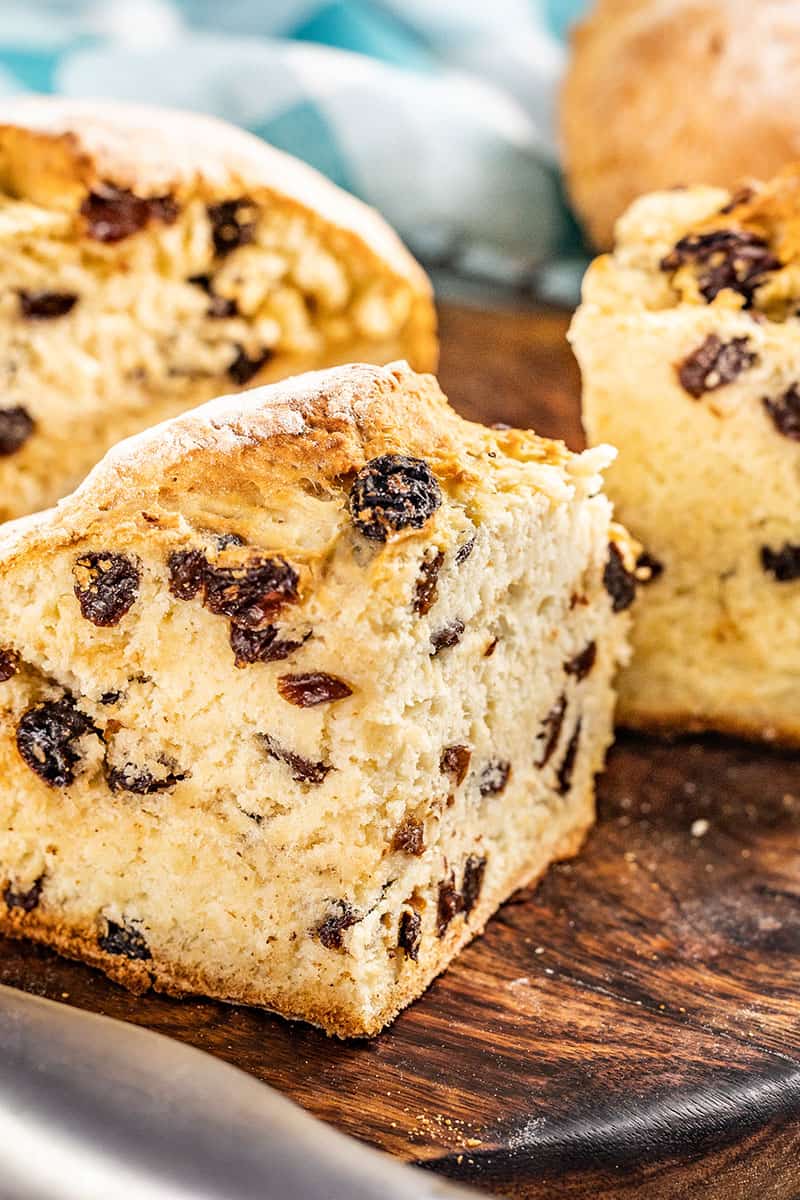
This bread is a go-to for me for a lot of reasons. It uses pantry staples I always have on hand and I can have warm, fresh bread on the table in under an hour. Adding raisins is traditional, and so is caraway, but you can always leave it plain. We particularly love this bread with caraway for extra flavor.
Ingredient Notes
- All-Purpose Flour: You start with 2 ½ cups and then add more as needed. Too much flour will make the bread dense, so add gradually.
- Salt: This bread is salty and savory. If you prefer less, you can reduce it to 1 teaspoon.
- Baking Soda: Make sure that baking soda is fresh because this is where the rise comes in without yeast.
- Buttermilk: If you don’t have buttermilk, mix 1 ½ cups milk with 1 ½ tablespoons lemon juice or vinegar and let it sit for 5 minutes.
- Raisins: Traditional in Irish soda bread! Use regular or golden raisins, or swap them for currants. Or leave them out entirely.
- Caraway Seeds: These add a slightly nutty, anise-like flavor which we love.
How Much Flour to Add
Flour amounts in bread recipes always vary a little because things like humidity and altitude can affect how much you’ll need. That’s why it’s best to start with the lower amount. In this case, we start with 2 ½ cups while you are still stirring, and add more flour while kneading.
The dough should be soft, slightly sticky, and easy to work with. If it’s too wet and sticks heavily to your hands or the counter, sprinkle in more flour a little at a time until it firms up. You want it tacky but not overly sticky. Be careful not to add too much, though! Extra flour can make the bread dense and dry.
Since Irish soda bread is a quick bread with no yeast, the dough will feel softer than traditional bread dough, and that’s okay. A little stickiness is normal, but it shouldn’t be dry or crumbly.
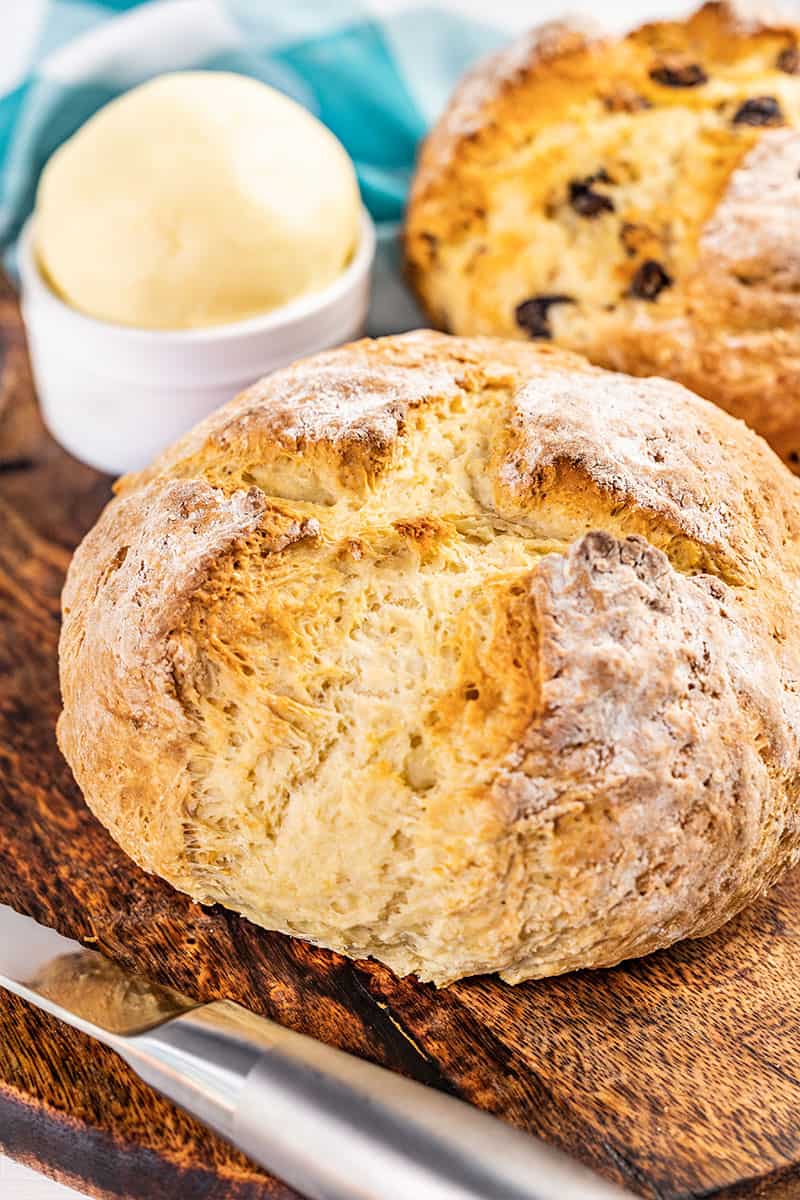
Raisins and Caraway: Optional
Raisins and caraway seeds are both traditional in Irish soda bread, but whether you add them is totally up to you! You can add both, just one, or skip them entirely—either way, this bread will turn out delicious!
Raisins add pops of sweetness that balances out the saltiness of the bread. Regular or golden raisins both work, or you can swap them for currants, which are slightly smaller and a little tangier. Not a fan of raisins? Feel free to leave them out.
Caraway Seeds bring a nutty, slightly anise-like flavor that gives the bread a more distinctive taste. They aren’t overpowering, but they do add noticeable flavor. If you’ve ever had rye bread, you’ll recognize the subtle hint of caraway. If you’re unsure, try adding just a little and see what you think!
What to Bake it On
You don’t need any fancy equipment to bake Irish soda bread, but different pans can change the crust and texture a bit.
Baking Sheet: The easiest and most common choice! A simple baking sheet lets the bread cook evenly and develop a crisp crust all around.
Cast-Iron Skillet: Want to go old-school? A cast-iron skillet holds heat really well, which helps create a beautifully golden, crisp crust—similar to how it was traditionally baked.
Dutch Oven: If you like a softer crust, baking in a Dutch oven with the lid on traps steam, which makes the bread extra tender. This mimics the Irish “bastible” method.
Storage Instructions
Irish soda bread is best enjoyed fresh. Store leftovers at room temperature in an airtight container, plastic bag, or wrapped tightly in plastic wrap. It will stay fresh for 2 to 3 days.
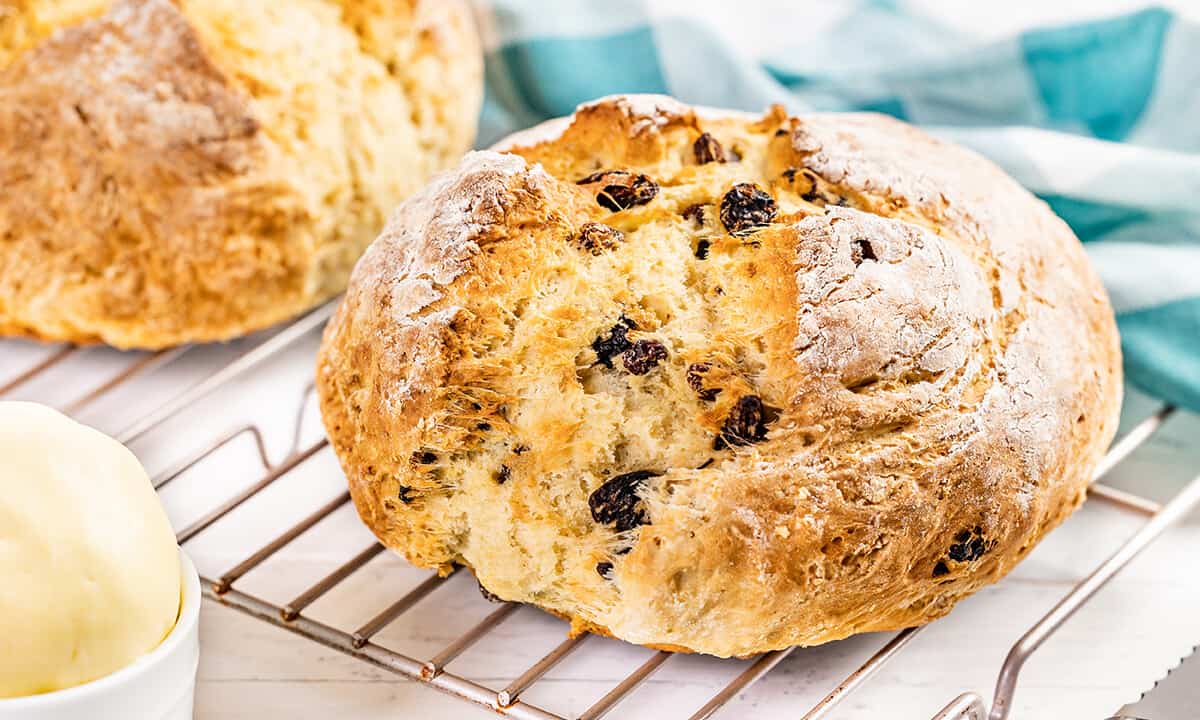
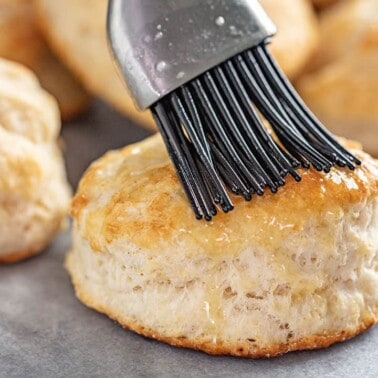

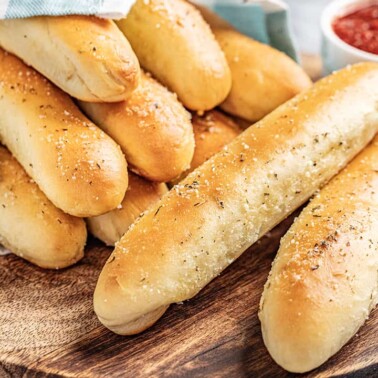
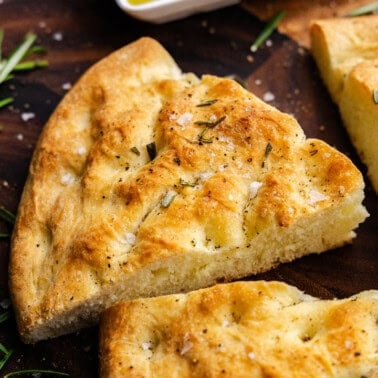
Seriously the best Irish soda bread recipe I have found. And I’ve tried several. When it is done baking I put a stock pot on top of it to trap the moisture while it cooled before cutting it. Perfect texture!
I lived in Ireland in the late 80s. We had our milk and ‘sandwich bread’ delivered daily, but made homemade soda bread every single morning for breakfast and tea. This is EXACTLY how I remember making it and exactly how I remember it tasting (I used only one teaspoon of salt.) So delicious! I will not, however, be making this often, as I just proceeded to eat the entire loaf in a day!!
Even making the buttermilk, this bread is crazy easy to make and is delicious (hard crust). Caution, easy on the salt. So easy to make I’m doing another batch to divide into fours and use as bread bowls for some cream of potato/ham soup.
I love your recipes….. I have no idea why I even bother looking on pinterest anymore…. i can usually find what i am looking for on your website.
Love your recipes. I have tried several.
I am impressed. Clear instructions with no interruptions. I need to find a substitute for buttermilk and then will make it today. Thank you.
I hope this helps! https://thestayathomechef.com/buttermilk-substitute/
This just like the recipe my grandma made me memorize. Except, too much salt. It’s only 1 teaspoon of salt. 1 pound flour, 1 teaspoon baking soda, 1 teaspoon salt, 14 oz. buttermilk, or sour milk. That’s the recipe I had to memorize.
Made this a few weeks ago, making another one this morning. Excellent recipe. Never made homemade bread before. Came out awesome. Thank you for sharing this recipe.
So easy to make and so delicious! Came out perfectly the 1st try! I’m making it again with 1/2 wheat flour and 1/2 regular flour. We will see how it turns out! The first loaf barely lasted 1.5 days before it was completely devoured!
This was a great recipe. Ignore, the others, the amount of salt in this recipe was right on. I didn’t have course sea salt so I went with the 2 1/4 tsp of fine grain sea salt. It could just be my oven, but my loaf took forever to cook. So I’d say the cooking time is closer to an hour. Bread was delicious. We ate it with Irish stew and everyone loved it. Will make again.